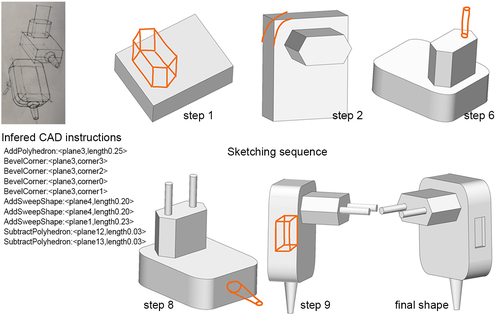Pre-recorded Sessions: From 4 December 2020 | Live Sessions: 10 – 13 December 2020
4 – 13 December 2020
Pre-recorded Sessions: From 4 December 2020 | Live Sessions: 10 – 13 December 2020
4 – 13 December 2020
#SIGGRAPHAsia | #SIGGRAPHAsia2020
#SIGGRAPHAsia | #SIGGRAPHAsia2020











Date/Time:
04 – 13 December 2020
All presentations are available in the virtual platform on-demand.
Lecturer(s):
Changjian Li, University College London (UCL), United Kingdom
Hao Pan, Microsoft Research Asia, China
Adrien Bousseau, Institut national de recherche en informatique et en automatique (INRIA) Université Nice Cote d'Azur, France
Niloy J. Mitra, University College London, Adobe Research, United Kingdom
Bio:
Description: We present a sketch-based CAD modeling system, where users create objects incrementally by sketching the desired shape edits, which our system automatically translates to CAD operations. Our approach is motivated by the close similarities between the steps industrial designers follow to draw 3D shapes, and the operations CAD modeling systems offer to create similar shapes. To overcome the strong ambiguity with parsing 2D sketches, we observe that in a sketching sequence, each step makes sense and can be interpreted in the context of what has been drawn before. In our system, this context corresponds to a partial CAD model, inferred in the previous steps, which we feed along with the input sketch to a deep neural network in charge of interpreting how the model should be modified by that sketch. Our deep network architecture then recognizes the intended CAD operation and segments the sketch accordingly, such that a subsequent optimization estimates the parameters of the operation that best fit the segmented sketch strokes. Since there exists no datasets of paired sketching and CAD modeling sequences, we train our system by generating synthetic sequences of CAD operations that we render as line drawings. We present a proof of concept realization of our algorithm supporting four frequently used CAD operations. Using our system, participants are able to quickly model a large and diverse set of objects, demonstrating Sketch2CAD to be an alternate way of interacting with current CAD modeling systems.
